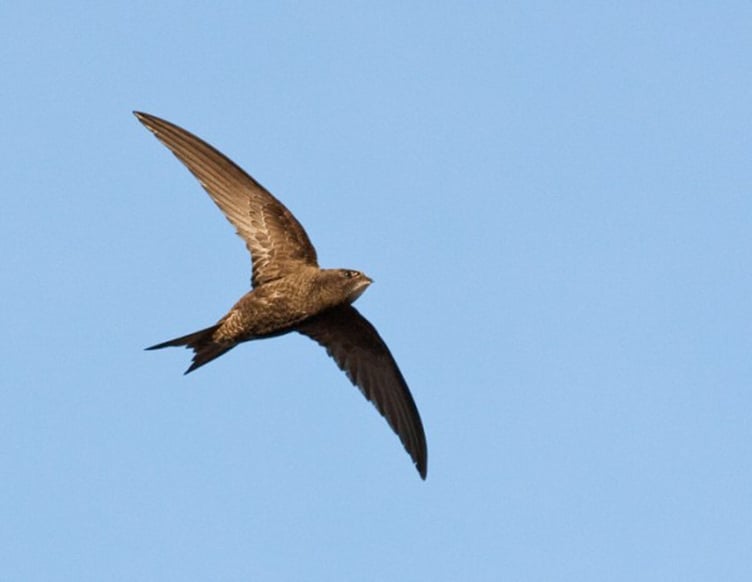Half the Manx population of swifts has been lost in the last 20 years.
Charities Manx BirdLife and the Manx Ornithological Society are appealing to the public for help as the birds face ‘serious decline’.
Swifts are aerial birds that look similar to swallows – plain brown with a white throat – but aren’t closely related to any other species.
They are summer visitors, breeding across the UK and spend their winters in Africa. Swifts migrate 3,400 miles twice a year, stopping off to refuel in places like Portugal and France along the way.
However, the number of these birds returning from Africa each summer to breed across the British Isles appears to be rapidly declining.
One of the reasons is the loss of nesting sites.
The charities have a citizen science project which is designed to establish where nest sites are located in the island and then, if possible, protect them.
‘Taking Action for Swifts’ is a joint initiative and aims to learn more about where swifts nest and feed in the Isle of Man, assess the breeding populations and monitor its fortunes, optimise the number of nesting opportunities around the island for the species, and raise awareness and appreciation of the creature and its feats.
The project can be found on Manx BirdLife’s website where people can fill out an online form on where they’ve seen swifts nest and note their observations.
Ramsey, Peel, Port Erin, Port St Mary and Douglas have been known to be ‘historical strongholds’ for nesting, however recent information has been ‘lacking’.
Both charities also want to increase the number of nesting opportunities by providing nest boxes in locations where swifts are known to congregate.
Janet Thompson, of Manx BirdLife, said: ‘Swift nests are totally concealed in holes and cavities within buildings and they leave little or no signs of habitation unlike house martins and swallows.
‘Refurbishment of old buildings and current building practices block these cavities although replacement boxes fitted during renovation and specially designed bricks in new buildings can be provided to mitigate this loss.
‘Manx swifts are with us for only a short time each year from May to early August and the first indication that they are nearby is their screaming call.
‘If they are seen flying low and screaming then there is a good chance that they may be nesting nearby.’
She added: ‘If people are lucky they will see them approach their nest site at great speed, cling to the wall for a second and disappear into their nest holes.
Swifts will be feeding young at this time so now is an ideal opportunity to look out for them.
‘The birds like to nest in urban locations and the main areas of nesting activity are in Ramsey, Douglas, Peel, Castletown and Port Erin.’
l If you have any sightings to report, contact Ms Thompson on 428953 or fill out the online form.

.jpg?width=209&height=140&crop=209:145,smart&quality=75)

.jpeg?width=209&height=140&crop=209:145,smart&quality=75)

Comments
This article has no comments yet. Be the first to leave a comment.